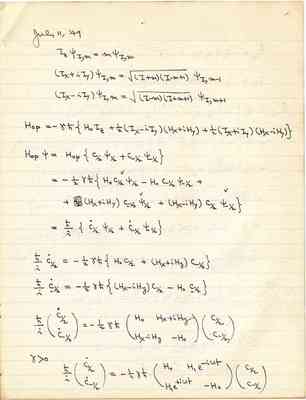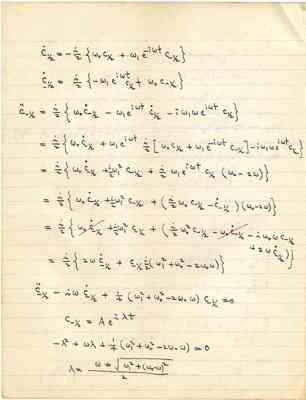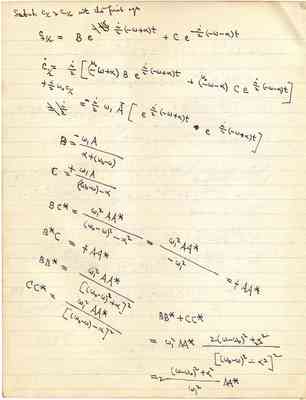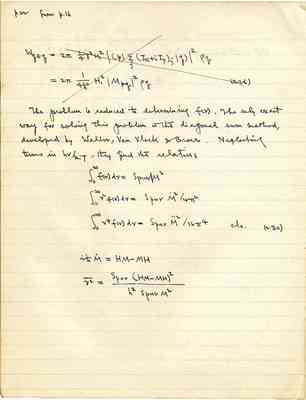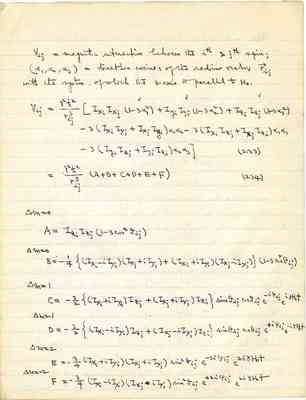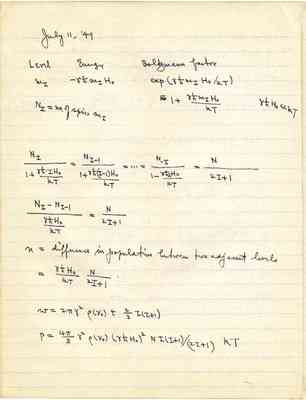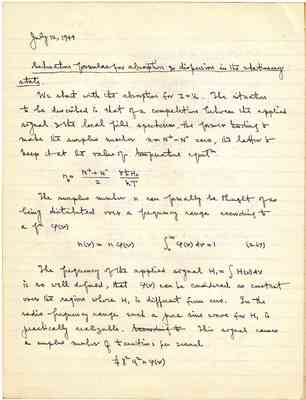Pages That Need Review
Research Notes II, 1949
24
The mean square local field from term A is [?] by
The mean square deviation in frequency by
To this we have to add the contribution of term B. To B corresponds the simultaneous flopping of two antiparallel spins ( or vice versa. This process is energetically possible & is caused by the proession of the nuclei around H0 with the Larmor frequency. So they produce an oscillating field of resonance frequency at the position of their neighbors, resulting in reciprocal transitions. Classically we might say that this process limits the life time of the spin in a given state & thair therefore [?] the spectrum. To (2.35) we have to add a numerical factor to take the effect of B into account. The proper factor has been calculated by Van Vleck in a rigorous manner with the diagonal sum method, using formula (2.32) For Hop we take the terms of type A & B of the perturbation The component of the magnetic moment,
28
July 12, 1949
Saturation formulas for absorption & dispersion in the stationary state
We start with the absorption for I=1/2. The situation to be described is that of a competition between the applied signal & the local field spectrum, the former tending to make the surplus number zero, the latter to keep it at the value of temperature equilm.
The surplus number n can formally be thought of as being distributed over a frequency range according to a fn φ(ν)
The frequency of the applied signal {tex: $H_1 = \int H(\nu)d\nu :tex}} is so well defined, that φ(ν) can be considered as constant over the region where H₁ is different from zero. In the radio frequency range such a pure sine wave for H₁ is practically realizable. According to This signal causes a surplus number of transitions per second
